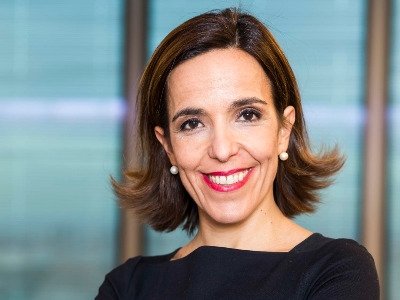SPACs: The “Tesla” of investment

Also known as “blank check companies”, SPACs have been around for decades, also in Europe and Spain, but in recent years, they have become more popular, attracting big-name underwriters and investors. This is a phenomenon that seems to have increased in popularity during the pandemic, according to Lourdes Centeno Huerta, Corporate Law, Corporate Governance and Capital Markets partner at EY Abogados. During August last year alone, more than 50 SPACs were formed in the United States, raising $21.5 billion.

Although they are not new, SPACs have arrived in Europe, and specifically in Spain, as eagerly awaited, after the success in the USA. Why so much acceptance? What solutions does this business formula provide, and what gaps does it fill?
The SPACs phenomenon is not recent; these vehicles have existed for decades, mainly in the U.S. market, although they have been used much more frequently during the last year. Compared to the two SPACs that entered that market in 2010, approximately 115 SPACs announced or executed mergers in 2020. In European markets, although their origins date back to 2005, the development of SPACs has been less spectacular than in the United States, with only 13 vehicles launched on the London, Paris, Amsterdam and Milan stock exchanges since 2016 (10 of which were released during 2020 and 2021).
This recent promotion has been fueled by the emergence of important sponsors or promoters and opportunities for relevant transactions and strong financial returns, led especially by small companies, generally not listed, with high growth potential, that seek to increase their capital.
SPACs’ business model is easy to understand (they are investment vehicles that raise capital through an IPO in order to use it for the subsequent acquisition, either directly or indirectly by way of share-purchase, merger, spin-off, non-monetary contribution, global transfer of assets and liabilities or other similar transactions of one or more companies), and also a very simplified financial information (strictly speaking, the financial statements of a “shelf” company), so they can complete the IPO process in a few months and with hardly any comments or observations from the corresponding supervisor. This, together with the ability to generate financial returns in a very short period of time, is causing many sponsors to decide to opt for this type of investment vehicle in order to take advantage of the opportunities in a system of high liquidity and volatility.
On the other hand, for big companies looking for strategic growth opportunities, SPACs can be an attractive instrument to be considered: they can provide a unique opportunity to protect the company from financial risks and, at the same time, they offer the potential for high growth in terms of the return on investment (around 348% obtained after the acquisition of the target by the ten main SPACs in the U.S. market, based on the info found in SPACresearch.com, March 2021). Likewise, they become an instrument for strengthening the portfolios of the entities that act as sponsors of these investments.
At the same time, for target companies that may be subject to an acquisition or merger, the SPAC is an attractive option to access capital markets (even foreign markets, in the case of cross-border SPACs), with a time horizon much shorter than usual, in case the access was intended to be done on their own, and obtaining a higher price.
Are there any unresolved issues or legislation depending on the jurisdiction when it comes to cross-border SPACs? What is your opinion about CNMV’s position?
The cross-border SPACs raise different points of interest: the regime applicable to the merger (in the event this is the transaction chosen with respect to the target entity), recognisable benefits to the investors and Tax aspects, among others. In relation to the latter, it should be noted that American SPACs tend to be domiciled in Delaware if their target is a U.S. company, and in the Cayman Islands if they have a foreign target. Of course, the circumstance of the registration in the Cayman Islands is not an incentive for European companies that are considering choosing this way of access to the capital markets.
Regarding the question about the position of the National Securities Market Commission (CNMV), I have to point out that, as it seems to be deduced from recent statements made in relation to the recently promoted SPACs phenomenon, said entity does not consider as necessary to substantially reform the current regulation to enable the use of this vehicle, notwithstanding the convenience of introducing certain details or specific questions to provide legal certainty and ensure its transparency and the protection of investors, especially minority shareholders.
The one and only regulatory initiative to date, in accordance with the text of the Second final provision of the Draft Law of the Securities Market and Investment Services (Disposición final Segunda del Anteproyecto de Ley del Mercado de Valores y de los Servicios de Inversión), currently in stage of hearing and public information, is the inclusion of two new articles in the Spanish Companies Act to set forth the concept of a listed company for the purpose of acquisition (SPAC) and the shareholder reimbursement mechanisms. There are additional aspects that perhaps, in my opinion, would be convenient to regulate, such as the deadline to carry out the acquisition of the Target, notwithstanding the fact that, in any case, whether or not they will be subject to future regulation, they should appear in the prospectus of the offer and admission to the negotiation of the SPAC. On the other hand, it seems curious that, when the regulatory project defines the reimbursement value of the shares, this corresponds to the lower between the price of the subscription offer prior to the admission to trading of the company’s shares and the amount equivalent to the aliquot part of the effective amount immobilised in the corresponding temporary account. Should it not always be the latter or, where appropriate, the highest between the two mentioned as an incentive mechanism for the initial investment in the SPAC?
What type of advice does a cross-border SPAC need?
With no doubt, advice in relation to matters related to the Corporate, company and Corporate Governance, Regulatory, Tax and Foreign Investments regime.
Likewise, as in any M&A transaction, Due Diligence (Tax, Commercial, Labour, Financial and Accounting…) will have to be carried out, in order to assess the risks and opportunities in relation to the considered target.
Has the pandemic influenced the increased usage of this business formula?
The volatility derived from the pandemic situation has caused companies that intend to obtain financing in the markets to seek other alternative solutions to the traditional IPO, as is the case of SPACs, in which certain risks derived from long preparation periods, uncertainty regarding the starting price and investor appetite, in addition to the high costs of entering the market, are mitigated, as a result of their own characteristics.
In which sectors are the most frequently used and why?
Regardless of the sector, they have become, as indicated above, an interesting alternative for startups that seek to access markets quickly and with the help of an experienced partner with in-depth knowledge of the complexities of the IPO process, as well as of the requirements of listed companies.
Do you think the formula will evolve over the course of 2021 and what are your predictions?
The experience accumulated in this last year has shown the utility and value that this type of vehicle can offer, from the point of view of both the investment and the financing, and, in this sense, it could seem reasonable, if the levels of liquidity that exist in the market stay the same, that it remains of interest. However, it is also true that in the U.S. the recent publication by the SEC of certain restrictive criteria has produced a slight reduction in these transactions. In Europe, although it is still too early to conclude if there is a bubble, and what the appropriate response should be, voices begin to emerge (in this sense, the words expressed recently in public by Natasha Cazenave, candidate for the position of Executive Director at ESMA) requiring the need to reflect on the reasons why investors risk their capital just on the basis of the sponsors’ names and the announcement of a project. All this suggests, as every time there are certain “exaggerations” in the market, that regulators will begin to focus more on the operation of this type of vehicles to ensure that the risks involved in their use are correctly managed, introducing or promoting, if necessary, the adoption of the corresponding conditions or restrictions, which should not necessarily mean a disincentive, but, on the contrary, a greater dose of legal certainty and confidence by all the agents involved in the transaction, necessary for the consolidation of this figure.
To read the interview in full please download issue N.105
By Desirá Vidal












